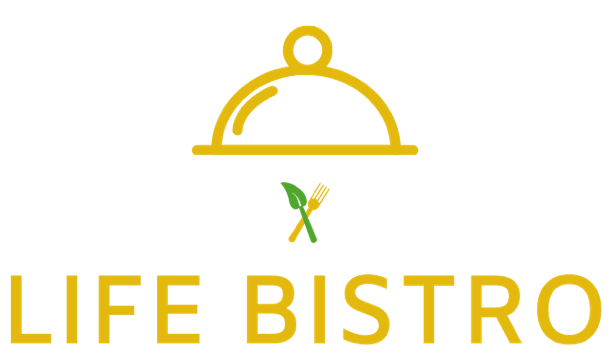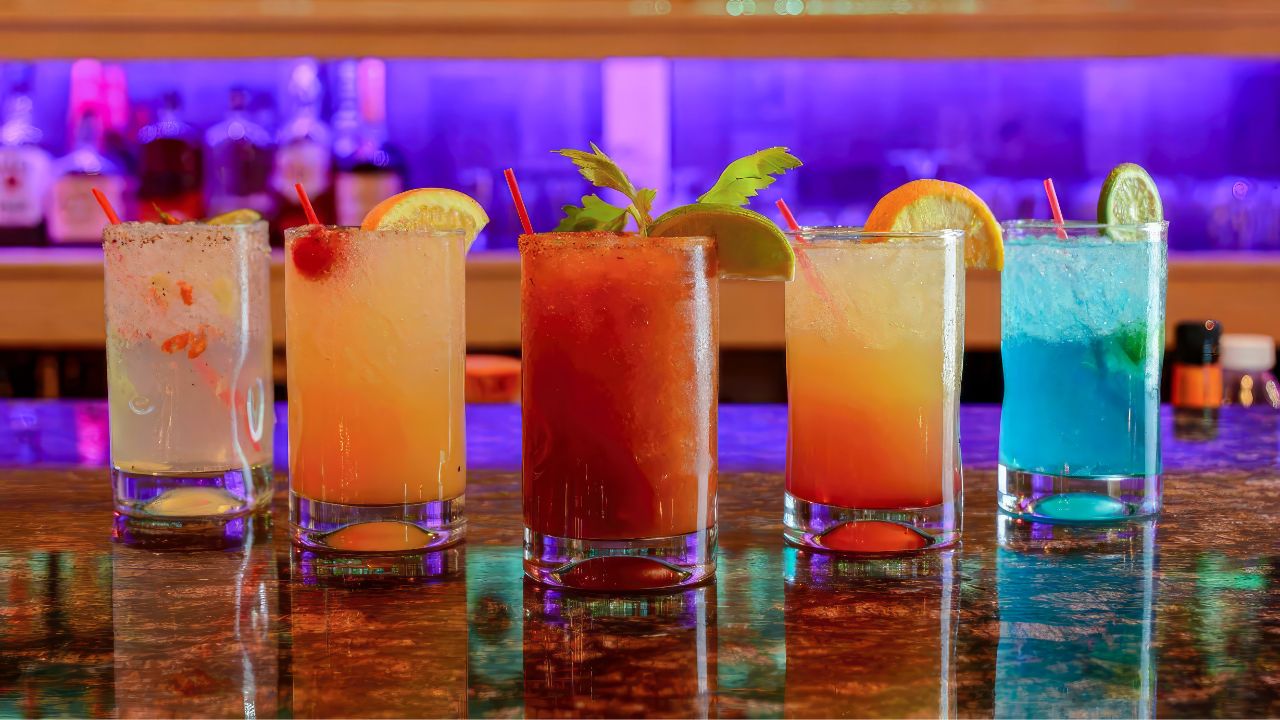Imagine sipping on an exquisite cocktail crafted with precision and care, using the freshest ingredients and presented with a touch of artistry. Welcome to the world of craft cocktails, where mixologists elevate the drinking experience, blending flavors and techniques to create masterpieces that are as pleasing to the eye as they are to the taste buds.
But what are craft cocktails? These drinks are meticulously crafted drinks using top-quality spirits, fresh ingredients, and artistic presentation. They engage the senses, offering harmonious flavors and exquisite visuals, setting them apart from standard mixed drinks.
So, are you ready to embark on a journey to discover the magic of mixology, its rich history, and the unique characteristics that set craft cocktails apart from regular mixed drinks? Let’s raise a glass.
Key Takeaways
- Discover the captivating history of craft cocktails and their modern evolution.
- Learn about Prohibition’s influence on iconic recipes, techniques for creating perfect flavor & display, and signature ingredients like spirits & homemade syrups.
- Celebrate the artistry of mixology with creative innovations in bars or at home, from timeless classics to future trends!
Introduction – What Are Craft Cocktails
Craft cocktails transcend mere beverages, engaging our senses fully. They’re carefully crafted with premium spirits and fresh ingredients, emphasizing finer details like garnishes and glassware, distinguishing them from ordinary mixed drinks.
Moreover, exploring the enthralling historical journey of craft cocktails, stretching back to the 17th century, unveils the crucial significance of quality spirits in shaping their development.
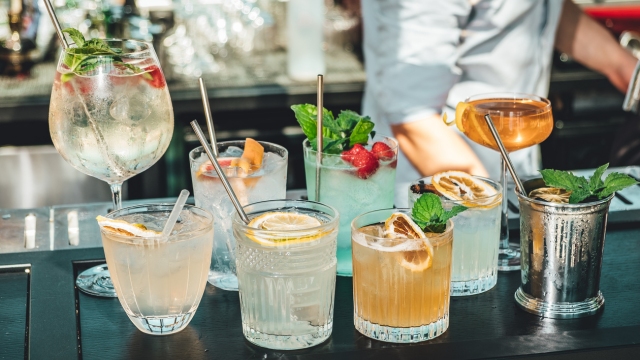
The History and Evolution of Craft Cocktails
The captivating realm of craft cocktails boasts a rich history that has evolved from early spiked punch mixtures to the sophisticated libations cherished today. Traversing these delightful drinks’ origins entails exploring Prohibition’s influence on their evolution and the contemporary craft cocktail movement, which enthralls mixologists and adventurous imbibers.
So, come along as we pay tribute to the bygone eras, the current trends, and the promising future of craft cocktails while delving into the fascinating stories behind these beloved beverages.
Origins and Early Developments
Tracing the lineage of craft cocktails leads back to the 17th century, though the precise inception remains elusive. During the 1980s, Dale DeGroff and fellow mixologists and restaurateurs revitalized the Prohibition-era atmosphere, marking the genesis of the contemporary craft cocktail movement.
Progressing from esteemed pre-Prohibition classics such as the Sazerac, Manhattan, and Old Fashioned to today’s inventive libations, the evolution of classic cocktails continues, spurred by creativity, ardor, and a profound reverence for mixology’s artistry.
Prohibition and its Impact on Craft Cocktails
During the Prohibition era (1920-1933) in the U.S., a transformative phase unfolded in the landscape of craft cocktails. As alcohol sales were outlawed, speakeasies sprang up, prompting mixologists to employ innovative methods to mask the taste of substandard homemade alcohol.
Moreover, the necessity to enhance the flavor of these clandestine drinks fueled the creation of a novel formula incorporating fruit juices, syrups, and various mixers. Bartenders also experimented extensively with alternative ingredients and substitutions due to the scarcity of specific spirits.
Consequently, iconic craft cocktails like the Sidecar and the Mary Pickford emerged, leaving an enduring legacy that continues to tantalize our palates today.
Modern Craft Cocktail Movement and Key Influences
The modern craft cocktail movement took flight in the 1980s when Dale DeGroff started popularizing classic cocktails and creating new ones using premium ingredients and fresh-squeezed juice. This era saw a resurgence of interest in traditional cocktail recipes, forgotten spirits, and a growing demand for artisanal craft beverages.
Moreover, the influence of small-batch distillers pushing the boundaries of creativity and innovation has significantly contributed to its popularity.
Today, the craft cocktail movement is characterized by a refined and sophisticated approach, emphasizing quality, creativity, and innovation, thereby establishing new standards in the world of mixology.
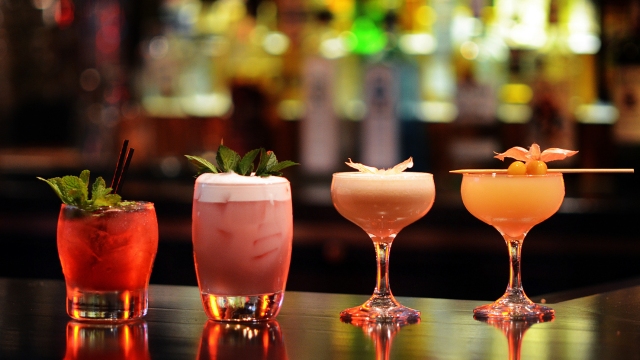
Defining the Craft Cocktail
What sets craft cocktails apart from their standard mixed drink counterparts? The answer lies in their intricate preparation, fresh and high-quality ingredients, attention to detail that ensures a perfect balance of tastes, and a visually stunning presentation.
Comparison with Regular Mixed Drinks
Craft cocktails stand out from regular mixed drinks due to the care and precision that goes into their creation. While standard mixed drinks may contain basic ingredients like white rum, vodka, and soda water, the concoctions take it up a notch with carefully chosen ingredients, elegant garnishes, and innovative techniques.
This attention to detail ensures the drink is visually appealing and offers a harmonious taste balance that tantalizes the taste buds. Ultimately, craft cocktails, also known as craft drinks, elevate the drinking experience into a true sensory delight.
Ingredients: Freshness and Quality
Freshness and quality are fundamental in the realm of craft cocktails. By using fresh, locally sourced, and high-quality ingredients, mixologists not only enhance the flavor and aroma of the drink but also add a touch of sophistication and refinement.
It’s important to note that the art of sourcing the best ingredients and using them to create well-balanced and flavorful drinks lies at the heart of the craft cocktail movement.
So, whether you’re sipping on a classic Moscow Mule with ginger beer or an innovative new creation, you can be sure that the freshest ingredients, including fresh juices and lime juice, are at the core of your delightful drink experience.
Preparation: Techniques and Attention to Detail
Meticulous preparation is key when crafting the perfect cocktail. Each step, from muddling herbs and fruit to shaking and stirring the ingredients, demands skill and precision to ensure a harmonious blend of flavors.
Also, layering, another technique used in craft cocktails, involves carefully pouring ingredients based on their specific gravity to create distinct layers in the drink.
Presentation: Importance in Craft Cocktails
A visually stunning display is the finishing touch that elevates a craft cocktail from a mere drink to a sensory experience. It encompasses key elements such as unique and creative glassware, elegant garnishes, thoughtful use of color and texture, attention to detail in the arrangement of ingredients, and artistic display techniques, such as layering or floating ingredients.
Furthermore, the use of curated ingredients, custom and handmade elements, and unique display techniques not only adds to the visual appeal of the cocktail but also stimulates our senses, making the experience truly memorable.
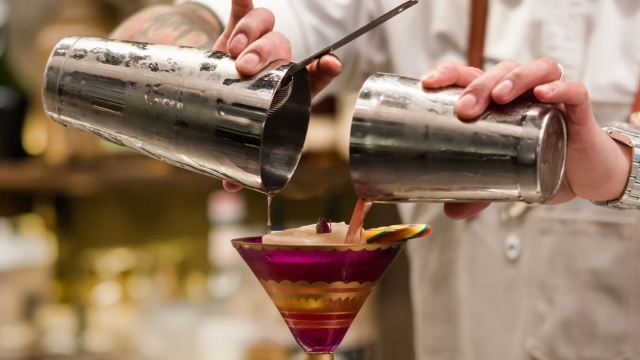
The Art of Crafting a Cocktail
Crafting a cocktail is an art form, blending flavors, textures, and aesthetics to create a masterpiece that delights the senses. From selecting the perfect glassware to striking the right balance between sweet and sour, crafting a cocktail demands skill, creativity, and a keen understanding of the ingredients.
Glassware and Presentation Aesthetics
The choice of glassware plays a vital role in the display of a craft cocktail. The glass’s shape, size, and style not only influence the drink’s visual appeal but can also enhance the tastes and aromas, adding to the overall experience.
From elegant coupe glasses to stylish martini glasses, the right glassware can make all the difference in the demonstration. When paired with creative garnishes and a keen eye for aesthetics, the perfect glass can elevate the cocktail experience to new heights.
Balance and Flavor Profiling
Achieving balance and creating unique flavor profiles are essential components of crafting an exceptional cocktail. By adjusting the levels of sweetness, acidity, bitterness, and other elements, mixologists can create drinks that are both harmonious and full of flavor.
Moreover, experimenting with new, unique ingredients and flavor combinations is crucial in developing innovative drinks that cater to the ever-evolving tastes of the adventurous drinker.
From sweet and salty to sour and umami, the possibilities for crafting cocktails that tantalize the taste buds are endless.
Advanced Techniques: Infusions, Syrups, and Aging
Proficiency in advanced methods like infusions, syrups, and aging is crucial to the creation of outstanding craft cocktails. In particular, infusions involve combining different tastes and aromas into spirits, resulting in unique and complex creations.
On the other hand, homemade syrups add sweetness, flavor, and depth to cocktails, allowing mixologists to customize their creations and cater to individual tastes.
In addition, aging involves storing the cocktail in oak barrels or airtight containers, allowing the tastes to meld and develop over time.
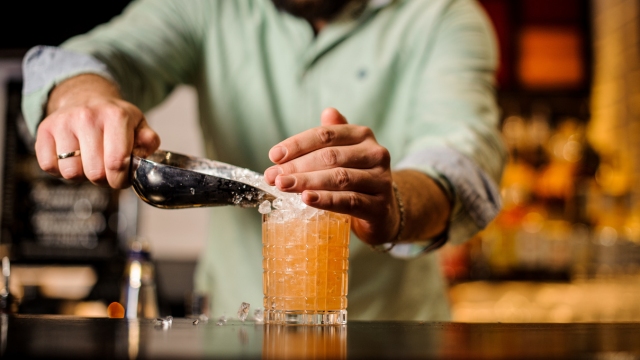
Key Techniques in Craft Cocktail Preparation
The art of crafting a cocktail involves a range of key techniques that ensure a perfect blend of flavors and a visually stunning display. From muddling and shaking to stirring and layering, each technique plays a vital role in the creation of a well-balanced and flavorful drink.
Muddling, Shaking, Stirring, and Layering
Muddling is the process of crushing ingredients to release their taste and oils, which is essential for creating cocktails with a rich and complex taste. Shaking, on the other hand, thoroughly mixes the ingredients, quickly chills the cocktail, and incorporates air, resulting in a cold and well-mixed drink with a frothy texture.
In addition, stirring gently and consistently ensures proper dilution and chilling of the drink, allowing the tastes to blend together harmoniously without introducing too much air or ice melt. Lastly, layering involves carefully pouring ingredients of different densities to form distinct layers in the drink, adding a visual element to the cocktail and enhancing the overall experience.
The Role of Ice in Craft Cocktails
Ice plays an important role in the crafting of the perfect cocktail. As it melts, it dilutes the drink, altering the taste and balance of flavors. The size and shape of the cubes can all affect the quality of the drink, with larger cubes melting more slowly and minimizing dilution.
Furthermore, it also plays a vital role in the display, with specialty ice cubes and spheres adding a touch of elegance and sophistication to the final product.
The Bartender’s Craft: Skill and Knowledge
Creating exceptional craft cocktails requires a deep understanding of the ingredients and techniques involved, along with the skill and knowledge to bring these elements together in perfect harmony. Additionally, selecting the finest quality spirits and mastering the art of muddling, shaking, and stirring are essential.
Thus, by honing their skills and expanding their knowledge, mixologists can create truly remarkable cocktails that not only taste amazing but also look like works of art.
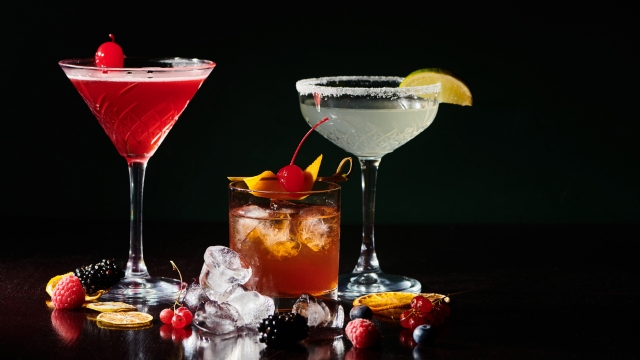
Signature Ingredients in Craft Cocktails
Craft cocktails are celebrated for their distinct and flavorful mix of premium ingredients. Some of these ingredients include spirits, liqueurs, fresh garnishes, and homemade syrups. These ingredients are what set the concoctions apart from their standard mixed drink counterparts, making them a true phrase craft cocktail experience.
Spirits, Liqueurs, and Bitters
Spirits, liqueurs, and bitters are all fundamental components of craft cocktails, offering the alcohol content, flavor, and complexity that render these drinks truly exceptional. Notably, popular spirits utilized in the drink encompass whiskey, vodka, gin, rum, tequila, and brandy.
Additionally, liqueurs such as sweet vermouth and maraschino contribute depth and richness to these delightful concoctions. Furthermore, bitters, infused with botanicals and spices, introduce complexity and balance to craft cocktails, guaranteeing a harmonious blend of tastes that tantalize the senses.
Fresh Garnishes: Herbs, Citrus, and Edible Flowers
Fresh garnishes, like herbs, citrus, and edible flowers, play a pivotal role in enhancing craft cocktails’ tastes, aromas, and visual allure. For instance, mint, rosemary, basil, and lavender contribute a subtle yet flavorful essence.
Alongside herbs, citrus twists, and edible flowers can be employed as garnishes, with lemon juice offering a vibrant burst of color and a delicate finishing touch. Ultimately, these fresh garnishes heighten the display of a craft cocktail and impart a distinctive, memorable element to the entire drinking experience.
Homemade Syrups and Bitters
Homemade syrups and bitters are fundamental to concocting distinctive and exceptional cocktails. By crafting their syrups utilizing natural ingredients like fruits, herbs, and spices, Mixologists can tailor their cocktails to suit individual tastes and preferences.
Additionally, incorporating homemade bitters infused with an array of botanicals and spices contributes depth and intricacy to craft cocktails, ensuring a harmonized fusion of flavors that gratify the palate.
Also Read: The Secret of Gluten-Free Cocktails
Iconic Craft Cocktail Recipes
Craft cocktail recipes offer a diverse and exciting range of tastes and displays, from classic concoctions to modern innovations. Whether you’re sipping on a timeless Negroni or a contemporary Paper Plane, the artistry and skill behind these iconic libations will surely impress.
Classics Reimagined: The Negroni, Old Fashioned, and More
Craft cocktails thrive on innovation, exemplified by the reinterpretation of classic recipes. Bartenders are reshaping traditional cocktail staples like the iconic Negroni and timeless Old Fashioned, infusing novel tastes and techniques while conserving the essence of the originals.
These reimagined classics deliver a novel and stimulating perspective on revered historical cocktails, underscoring the continuous evolution and boundary-pushing creativity within mixology.
Modern Creations and Innovations
The craft cocktail movement has spurred a myriad of contemporary inventions and advancements that underscore the ingenuity and expertise of mixologists worldwide. Ranging from daring, zesty blends to revitalizing, fruity elixirs, these inventive concoctions provide a glimpse into tomorrow’s new flavors as bartenders persist in exploring distinct ingredients and methods to craft genuinely extraordinary beverages.
Whether you’re an intrepid imbiber or seeking to diversify your cocktail selection, these contemporary creations and innovations are bound to captivate and stimulate.
Recipe Examples: Paper Plane, White Negroni, Aviation, and Others
Feeling inspired to try your hand at crafting some iconic cocktails? From the Paper Plane to the White Negroni and the Aviation, these popular craft cocktail recipes offer a glimpse into the world of mixology and the endless possibilities it presents.
By mastering the techniques and ingredients used in these iconic drinks, you can create your own unique and flavorful libations that are sure to impress your friends and elevate any social gathering.
Why not ignite your passion for mixology by rolling up your sleeves and start shaking, stirring, and muddling?

Craft Cocktails and Culture
The craft cocktail movement has had a profound impact on our culture, shaping the way we socialize, celebrate, and enjoy our favorite drinks. From the bustling bars of major cities to the intimate gatherings of home mixologists, the art of mixology has become an integral part of our social fabric, bringing people together over shared experiences and a mutual appreciation for the finer things in life.
Craft Cocktails in Pop Culture
Craft cocktails have significantly impacted popular culture, leaving an indelible imprint from classic movies like Casablanca to modern favorites such as Cocktail, where they exude glamour and sophistication.
Moreover, celebrity endorsements of high-end spirits and the proliferation of mixology shows on various media platforms have solidified the position of craft cocktails in popular culture, spurring a new wave of mixologists and enthusiasts.
This captivating fusion of artistry, innovation, and flavor renders top-tier craft cocktails a cultural sensation, progressively gaining traction and making sought-after choices among patrons.
The Social Aspect: Bars and Home Bartending
Craft cocktails hold a significant position in social gatherings, offering an exceptional and unforgettable experience that fosters conversations, connections, and overall enjoyment. Notably, the inviting environment and ambiance of a craft cocktail bar naturally facilitate socializing, complemented by the expertise and enthusiasm of bartenders, who captivate guests with their profound knowledge and dexterity.
Conversely, the practice of concocting popular craft cocktails at home empowers individuals to express creativity, presenting friends and family with their distinct creations, thus solidifying this experience as an essential facet of our social existence.
Future Trends in Craft Cocktails
As the craft cocktail movement progresses and serves as a source of inspiration, several intriguing future trends are anticipated to emerge. These include the ascent of low- and no-alcohol cocktails, the utilization of botanical spirits, and an unwavering emphasis on the use of top-notch, freshly gathered ingredients.
Notably, technology is anticipated to significantly influence the evolution of craft cocktails, integrating augmented reality menus, interactive drink-making experiences, and AI-driven suggestions, thereby presenting novel avenues for creativity and innovation.
Despite the uncertainties of the future, one undeniable fact remains: the timeless allure of crafting cocktails will continue to enthrall and bring joy for generations to come.
Also Read: Why Are Cocktails Called Cocktails? Exploring the Fascinating Etymology and History
Final Thoughts
We’ve unraveled the magic of mixology, understanding the history, ingredients, techniques, and cultural impact that characterize craft cocktails. From the timeless classics to the innovative creations of today’s bartenders, craft cocktails represent the perfect marriage of artistry, skill, and taste. So, raise a glass to the art of mixology.
Related Questions
Still have questions? Check out a couple of common ones below.
What is the difference between draft cocktails and craft cocktails?
Draft cocktails are faster and consistent in taste, while the best craft cocktails take more time and require gesticulations from a skilled bartender.
What are the four categories of cocktails?
Learn the four cocktail categories—sours, fizzes, old-fashioned, and three-parters—and you can mix up practically any drink! Fizz cocktails include an acidic juice (e.g. lemon or lime) and carbonated water along with a spirit such as gin or rum.
